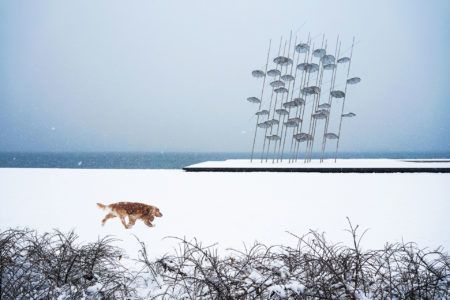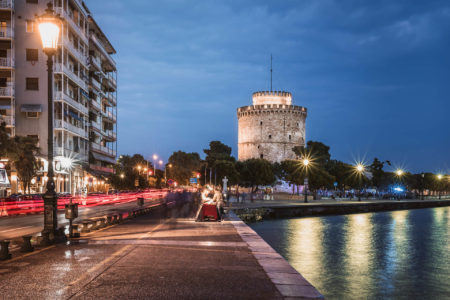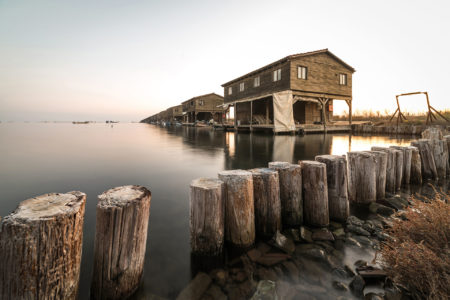TOP 12 ATTRACTIONS AND THINGS TO DO IN THESSALONIKI
See the top attractions and things to do in Thessaloniki presented with many pictures and all the useful information you will need. Discover the monuments, the museums, the food districts, and all the unique things that the second-largest city in Greece has to offer.
Last update: January 28, 2023
1) VISIT THE ROTUNDA & THE ROMAN SITES
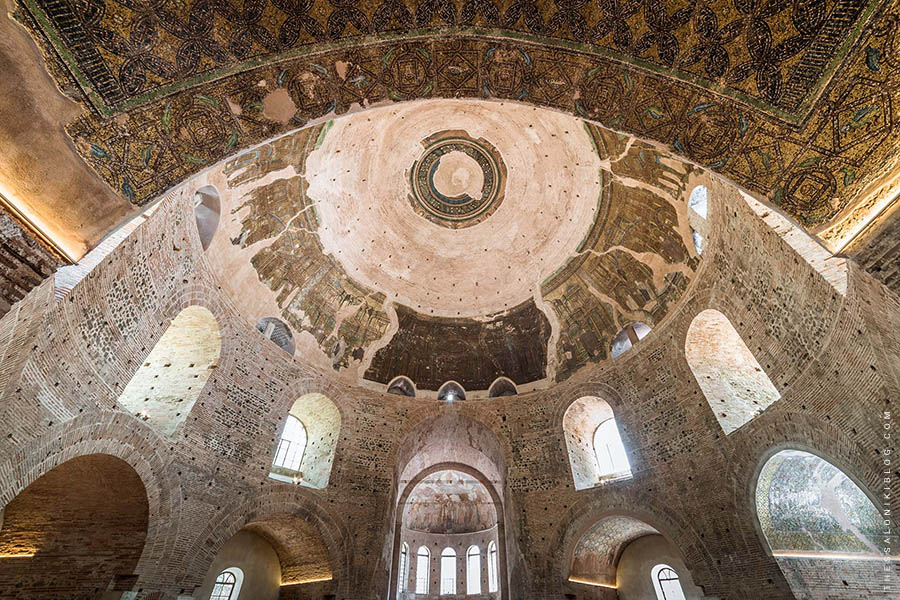
Even though the White Tower is the symbol of Thessaloniki, the most important monument of the city is the Rotunda, an UNESCO World Heritage Site since 1988. Its imposing interior, its brilliant mosaics, and the fact that it was built more than 1,700 years ago will make you feel awe from the moment you step in. The construction of the Rotunda was ordered by the Roman emperor Galerius at the beginning of the 4th century AD and its initial purpose was to be either a pagan temple or a mausoleum. It is shaped in a cylindrical form with a dome and it resembles the Pantheon of Rome.
After the construction of the Rotunda was completed at the end of the 4th century, several changes were made to its structure so that it could be used as a Christian church (such as the addition of the sanctuary at the west). The Rotunda remained a church for 1,200 years until it was converted into a mosque by the Ottomans in 1590/91. The minaret that you can see today in its courtyard is the only minaret in Thessaloniki that has been saved.
If you are interest in more monuments and sites from the Roman period of the city you should also not miss the Roman Forum (and its underground museum), the Palace of Galerius, and the nearby Arch of Galerius. Find more information and their opening hours here.
2) CLIMB TO THE TOP OF THE WHITE TOWER
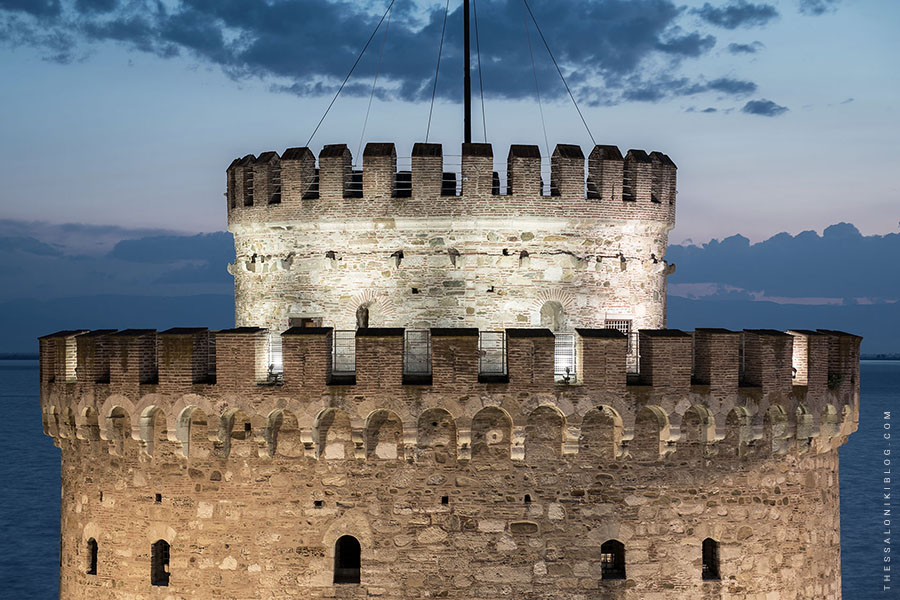
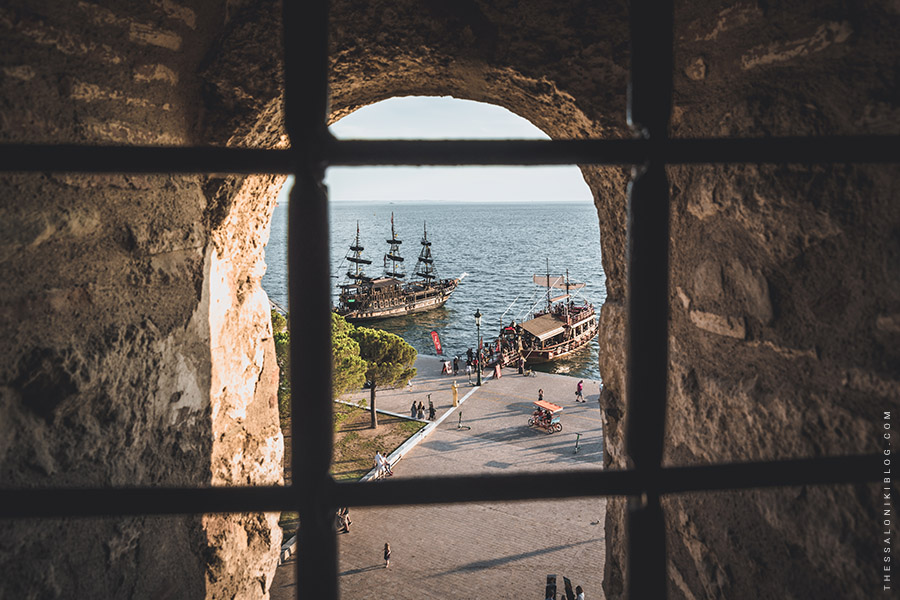
3) TAKE A WALK ALONG THE WATERFRONT
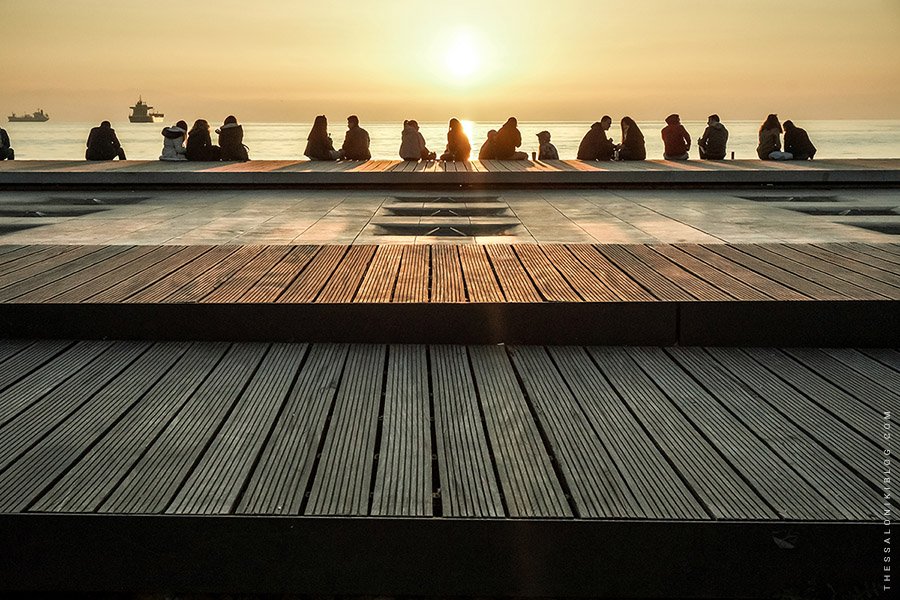
The coastline of Thessaloniki is divided into the Old Waterfront (within the historic center), and the New Waterfront (southeast of the White Tower). Along the 1,3km of the old waterfront, which is the most lively area of Thessaloniki’s nightlife, you will find many cafes, bars, restaurants, and the largest square of the city, Aristotelous Square. Also, at the west end of the old waterfront, you will find the restored former warehouses of Thessaloniki’s port that have been converted into museums (such as the Museum of Photography and the Cinema Museum), art spaces, and restaurants. Part of Thessaloniki’s International Film Festival and Thessaloniki’s Documentary Festival also takes place in the former warehouses.
On the other hand, along the 3km of the new waterfront, you will find many parks and gardens, wonderful art installations (such as the famous “Umbrellas” and “The Moon on the Coast”), outdoor sports facilities, playgrounds, and more. It is the most vital area in the city and the largest organized public space for recreational activities in Thessaloniki. The west orientation of the waterfront (old and new) makes it ideal for a stroll during the sunset. Throughout the entire area there is also a bike lane.
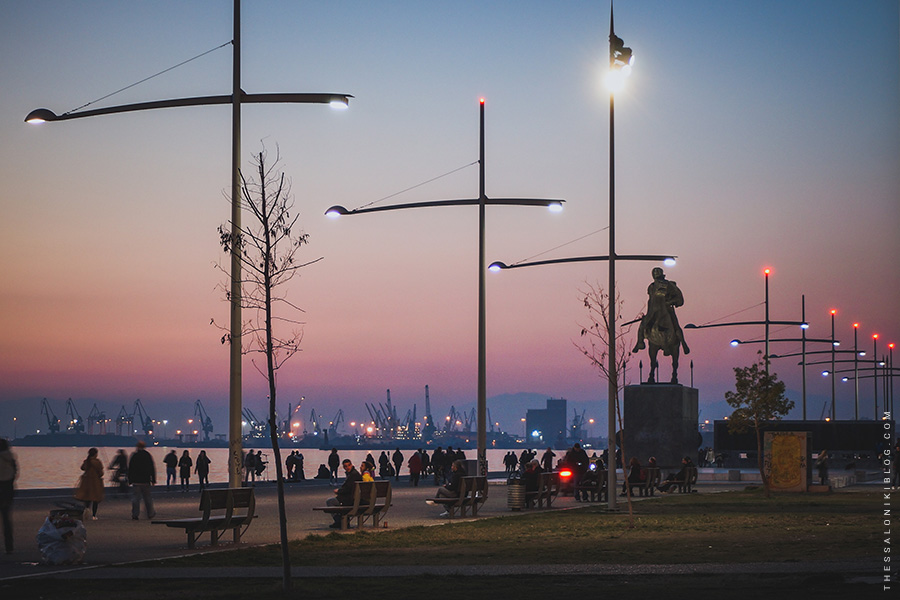
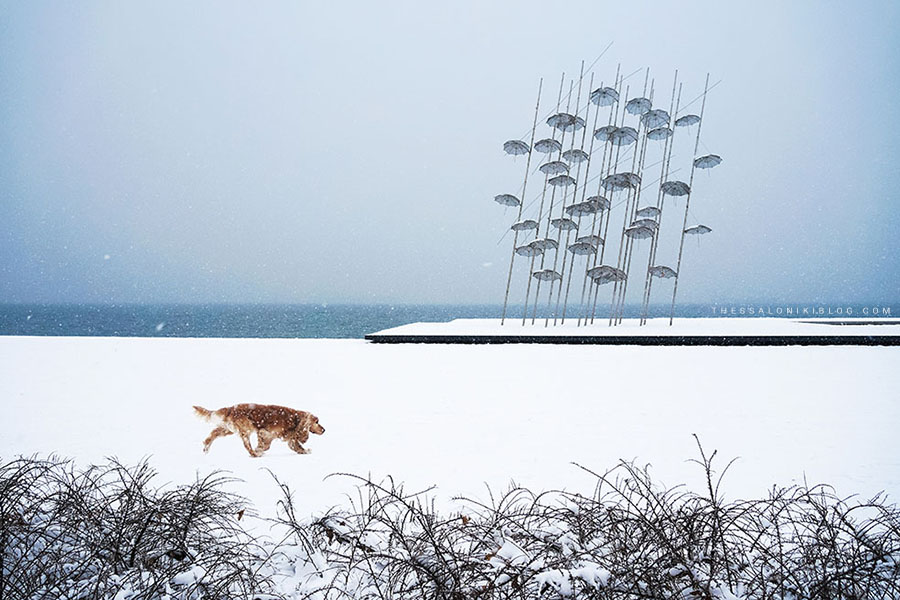
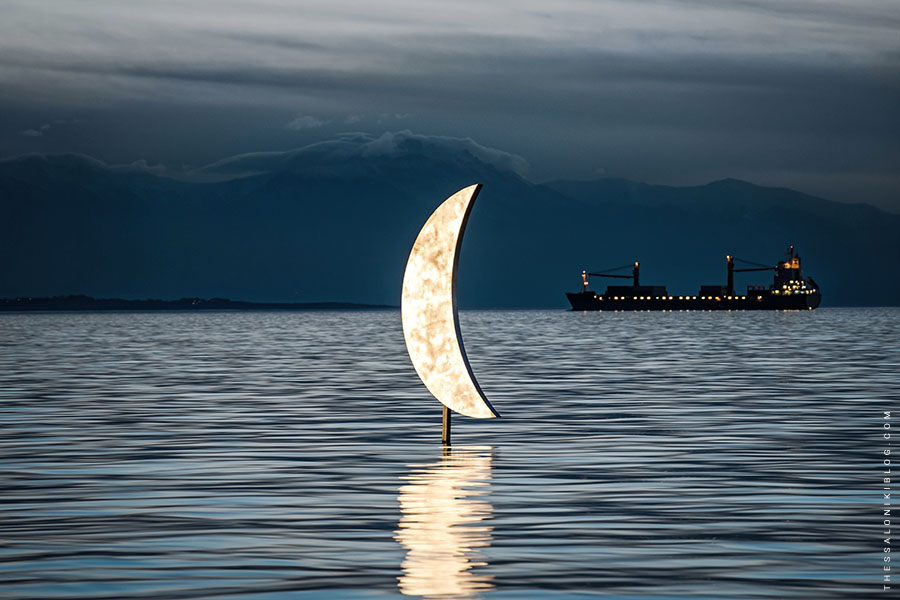
4) GO FOR A NIGHT OUT AT LADADIKA
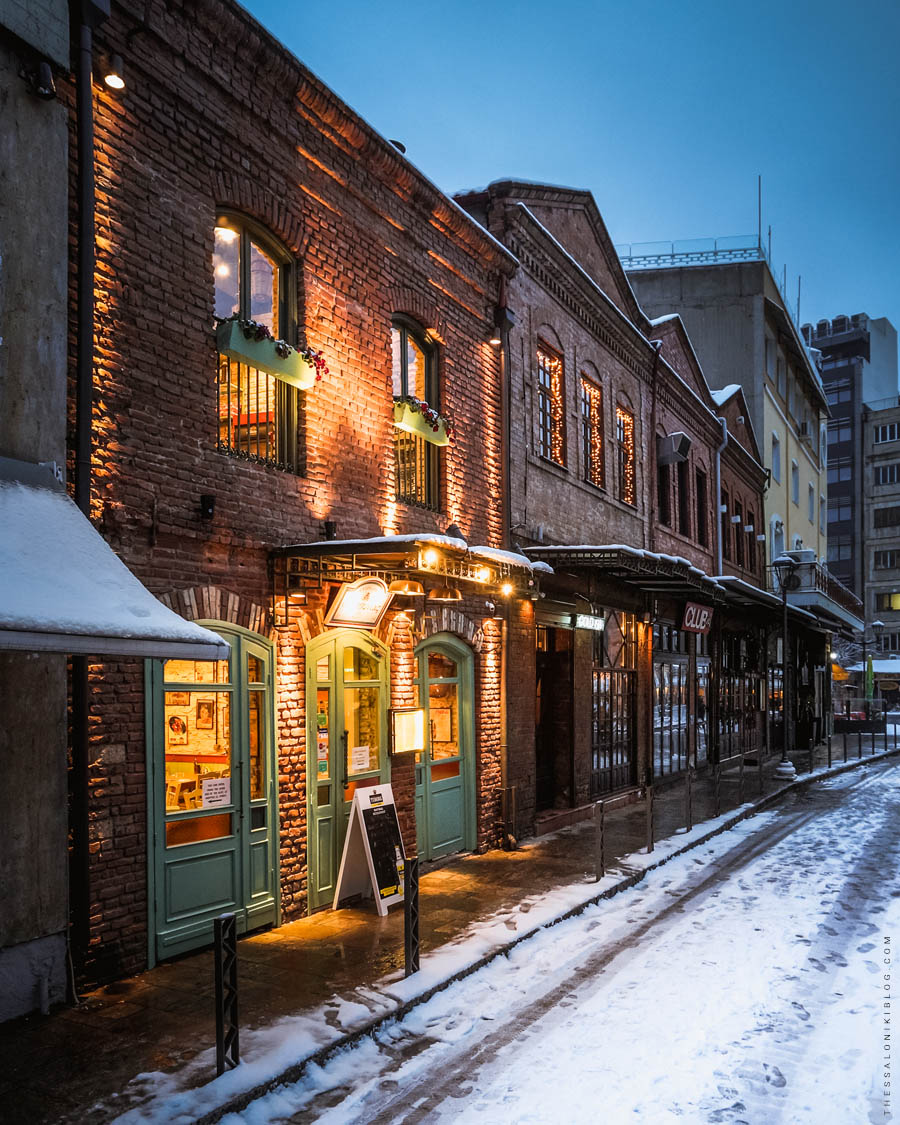
The district of Ladadika is a former olive oil market, close to the port of Thessaloniki, with many beautiful 19th-century brick-wall restored buildings and cobblestone streets. Its name comes from the greek word “ladi” which means oil. In the middle of the 20th century the commercial activities in the area started to decline and Ladadika soon turned to a seedy red-light district. Things became even worse after the big earthquake in 1978 when the area was almost totally abandoned.
In 1985, however, Ladadika was declared a cultural heritage site by the Greek State and since then it has become one the most popular areas in the city with many restaurants, cafe-bars, and popular night-clubs. It is one of the few districts that were saved from the Great Fire of Thessaloniki in 1917, and it has managed to keep much of its architectural character even to this day. Most of the restaurants in Ladadika are traditional taverns and it is a great place to taste the local cuisine.
5) EXPLORE THE TRADITIONAL MARKETS
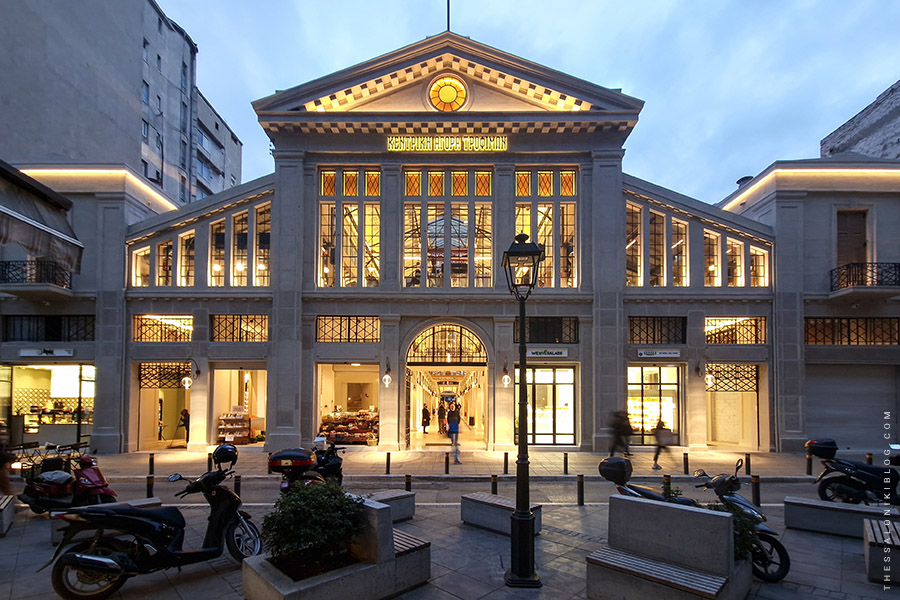
Kapani Market, Modiano Market, and Athonos Square are three traditional food markets located in the heart of Thessaloniki, around Aristotelous Square. All of them, are organized along arcades covered with glass roofs and they are housing several ventors selling spices and herbs, fresh fish and meat, greek cheese, cold cuts, coffee, tea, fruits, and vegetables, along with many other products and items such as wickerwork baskets, kitchen utensils made of copper and wood, and many more handcrafted objects, furniture, and accessories. In Modiano and Athonos markets, you can also find cafe-bars, street food venues and traditional taverns which are quite popular among tourists and locals as well.
Modiano Market, the historic Central Food Market of Thessaloniki, was totally renovated in 2022 and it is now open entirely upgraded. The building was constructed in the mid-1920s by the Jewish architect and civil engineer Eli Modiano (born in Thessaloniki) and its restoration was one of the most anticipated projects in the city. Close to Modiano Market and right next to Yiahudi Hamam, you can also find a small colorful corner with a couple of flower shops, named Louloudadika.
For those interested in exploring the old markets and the traditional food of Thessaloniki even further, Bit Bazaar is one more place that should not be missed. It is a small quarter with second-hand shops, antique stores and many taverns that get quite busy, especially during the summer nights.
6) VISIT THE EARLY CHRISTIAN & THE BYZANTINE CHURCHES
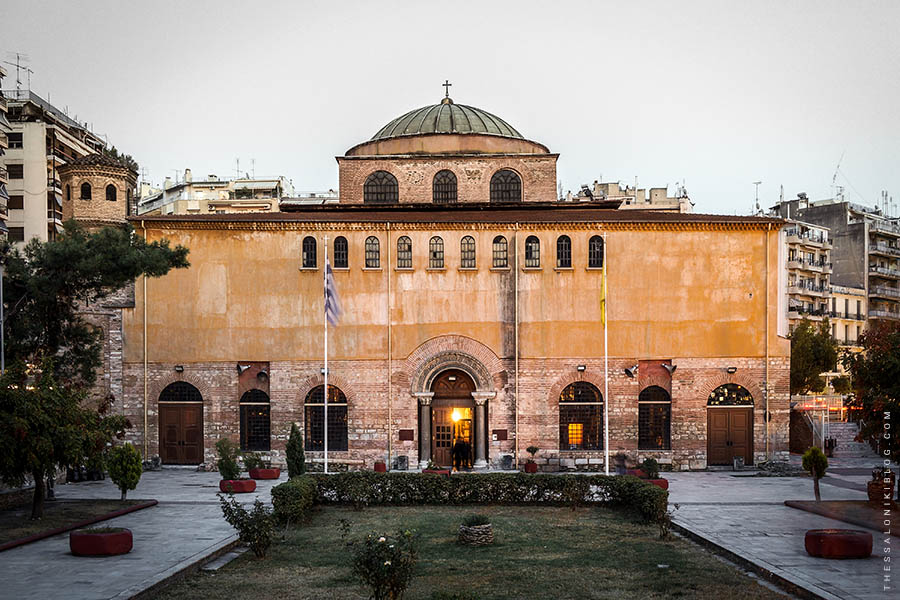
The Early Christian and the Byzantine churches of Thessaloniki are the most important monuments of the city and part of UNESCO’s World Heritage List since 1988. Even though visiting all of them is a hard “task” (you can see a recommended itinerary here) you should not miss at least the most important of them. Besides the Rotunda that we saw at the beginning of this article, some of the oldest, the largest, and the most representative Early Christian and Byzantine churches are:
- Agia Sofia (the cathedral of the city until the 16th century),
- Agios Dimitrios (the temple of the patron saint of Thessaloniki), and
- Acheiropoietos (a rare example of Early Christian architecture).
All three churches are conveniently located in the center of the city and can be easily visited in just one day. In their interior you can see beautiful architectural details and some of the most important mosaics of Thessaloniki. Underneath the basilica of Agios Dimitrios there is also an ancient crypt, which hosts a permanent exhibition with several artifacts that were found on site. Similarly, underneath Agia Sofia you can find the smaller in scale catacombs of Agios Ioannis (they can be accessed by the adjacent subterranean church of John the Baptist). All three temples are built on the ruins of ancient Roman baths.
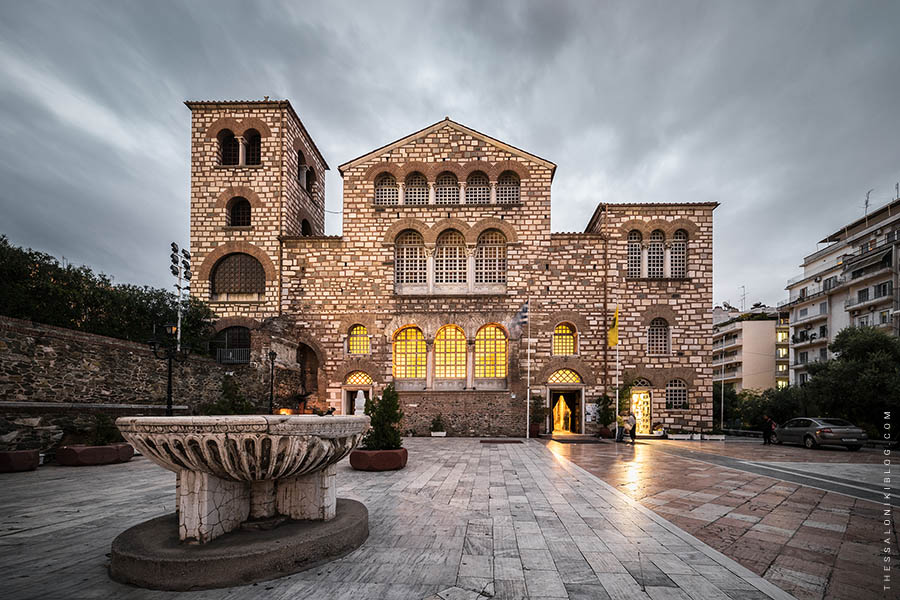
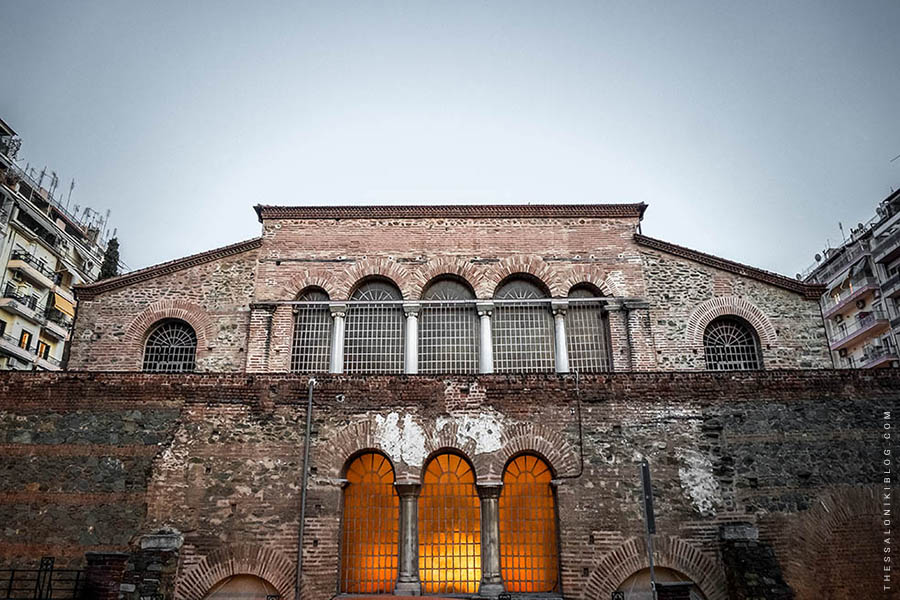
7) EXPLORE THE UPPER TOWN & THE ACROPOLIS FORTRESS
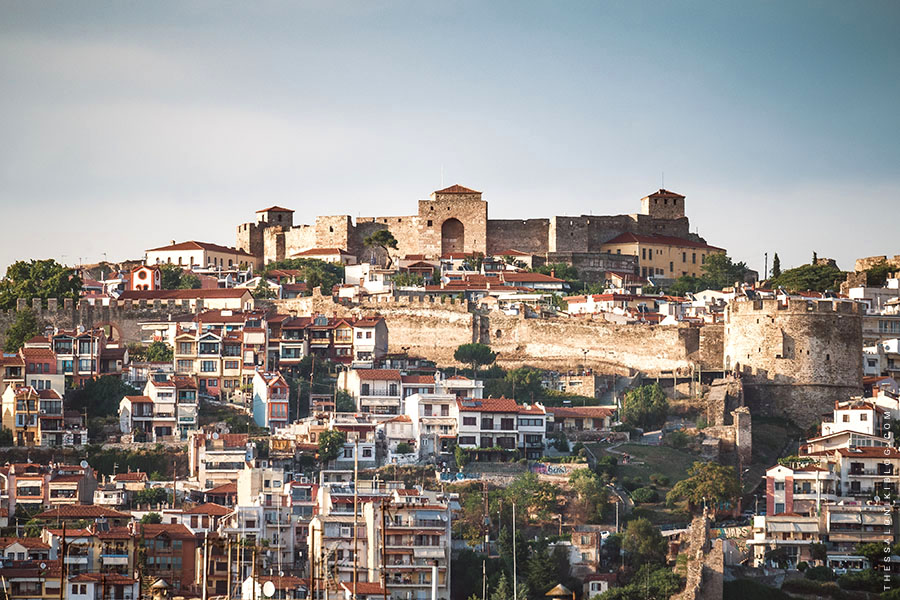
The Upper Town of Thessaloniki is the largest and the only residential part in the historic center of the city that was saved both from the Great Fire of Thessaloniki in 1917 and the reconstruction of the 50’s and the 60’s (the commercial district of Ladadika is another example). During the Byzantine years, the area was largely occupied by Christian Orthodox monasteries (today only their main churches are still standing – see them here). However, during the Ottoman period of the city the area became a place of residence mostly for the Muslims. The streets, the small squares, the fountains, the blocks, and the few buildings that have been saved from that period show a quite accurate picture of how medieval, pre-modern Thessaloniki used to look like.
In the Upper Town, you can also find the only Byzantine Bath of the city that was saved and the largest part of the remaining Byzantine Walls including the walls of Thessaloniki’s Acropolis and its Byzantine fortress at the highest point of the city known as Heptapyrgion or Yedi Kule. Heptapyrgion was converted into a prison by the Ottomans in the late 19th century and it retained that function until 1989 becoming the most notorious prison in Greece. Today, it is open to be visited as an UNESCO monument and a place where several cultural events take place mostly during the summer.
Most of the streets in the Upper Town are quite steep. However, if you like walking, the best way to explore the area is on foot. To see how you can move around by public transport see here.
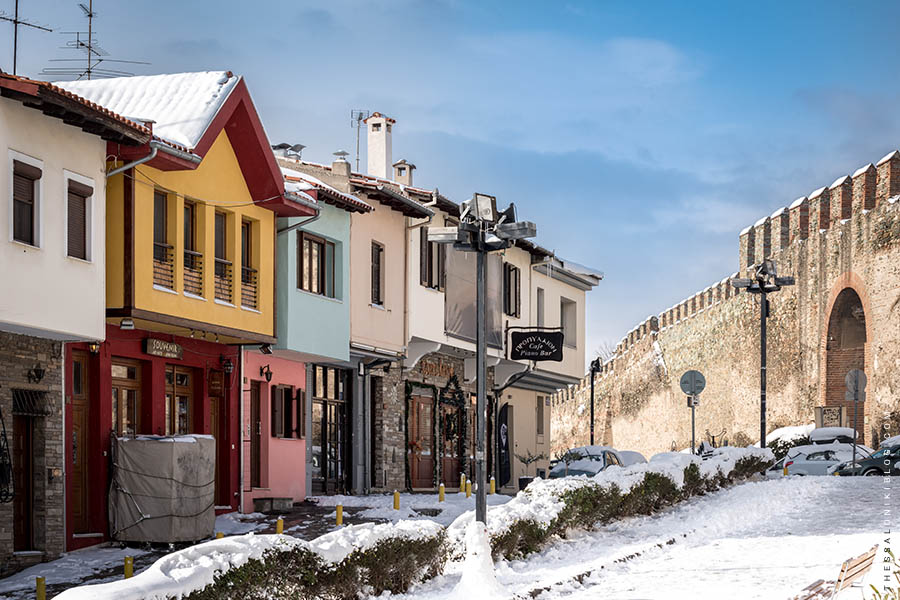
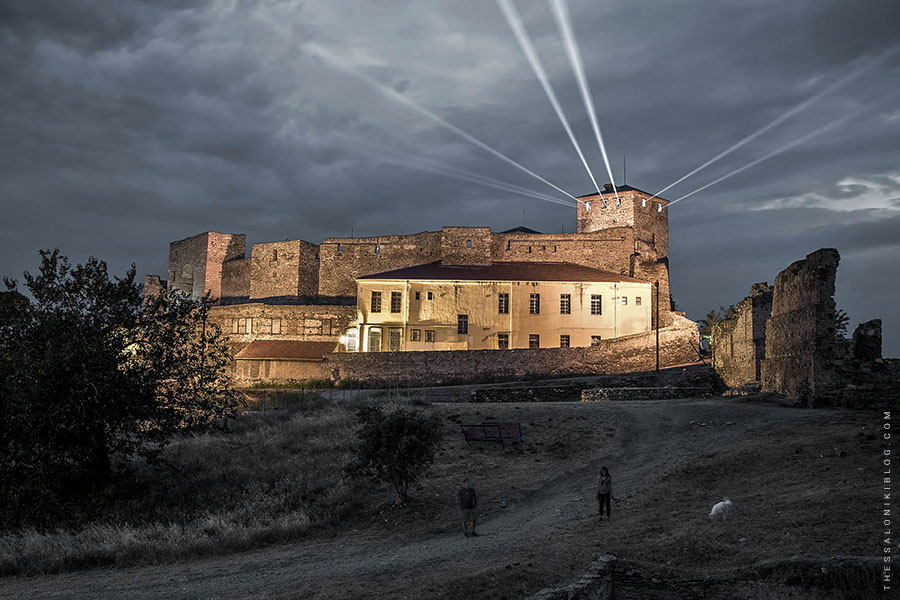
8) VISIT THE ARCHAEOLOGICAL & THE BYZANTINE MUSEUM
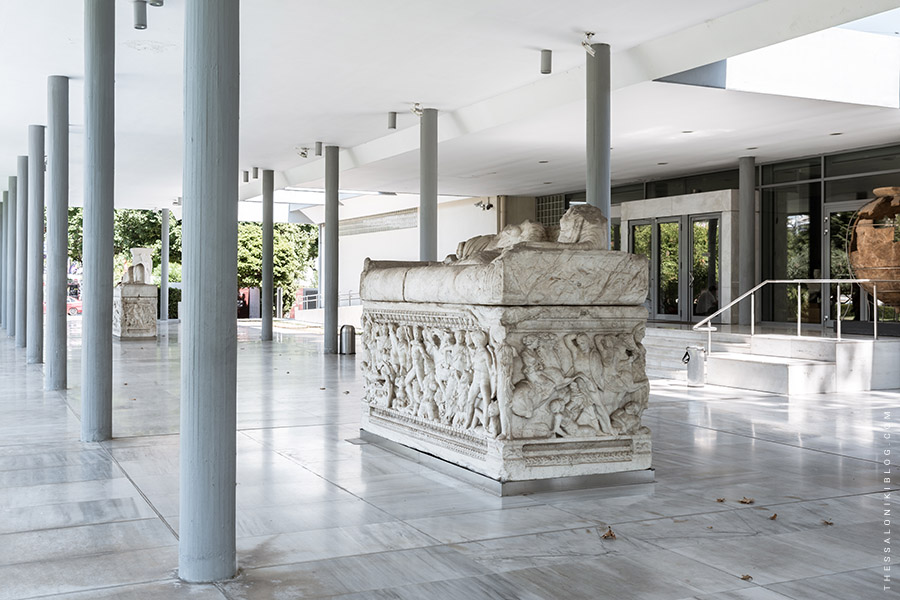
The Archaeological Museum of Thessaloniki and the Museum of Byzantine Culture are two of the largest and most important museums in Greece. They are located right next to each other (just 500m from the southeast boundary of the historic center), and visiting both of them is a must to anyone who wants to learn about the cultural heritage of the city.
In the Archaeological Museum you can see a large collection of artifacts that were created in the greater area of Macedonia and Thessaloniki dated from the prehistoric times to the late antiquity. On the other hand, in the Museum of Byzantine Culture you can see religious mostly artifacts dated to the Early Christian, the Byzantine, and the post-Byzantine periods (2nd to 20th century AD) – a testimony to the longest historical period of the city.
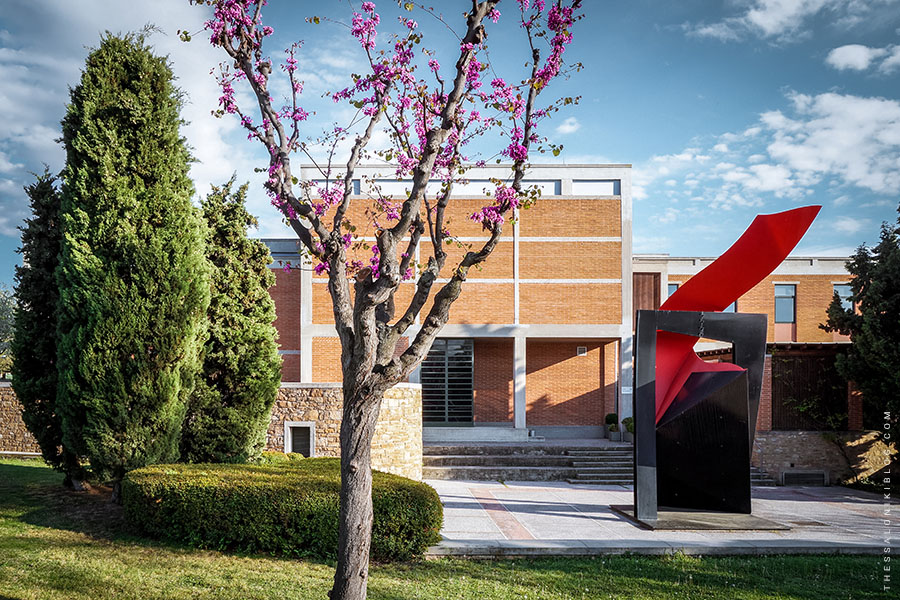
9) DISCOVER THE JEWISH PAST OF THE CITY
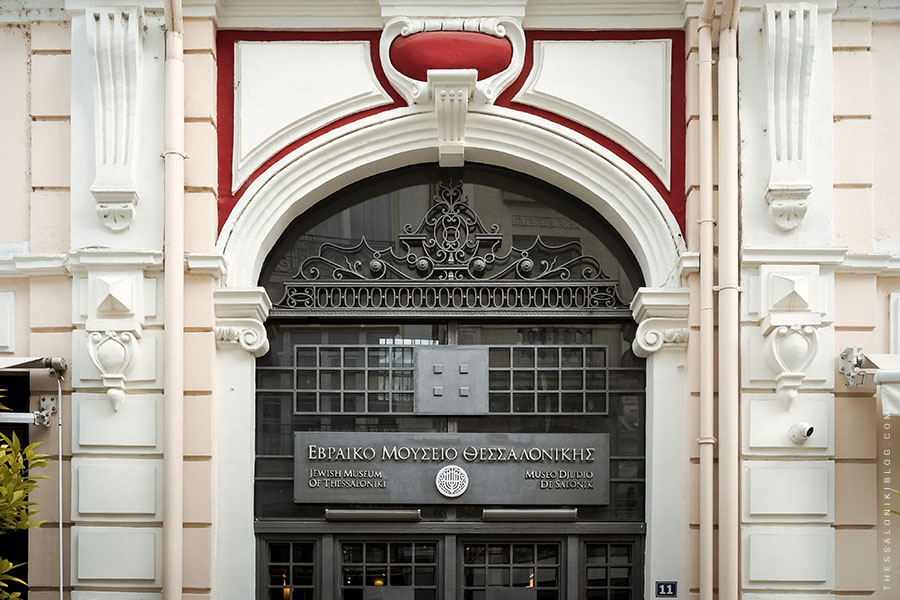
The Jewish community of Thessaloniki has a presence in the city that goes as far back as the Hellenistic years. It is remarkable that during the Ottoman period (15th to 20th century AD) and after the migration of many Ashkenazim and mostly Sephardim Jews, Thessaloniki became the only city in Europe in which the Jewish people were the majority. This centuries-old presence was violently disrupted during the German occupation and the Holocaust of World War II. It is estimated that 90-95% of the Jews from Thessaloniki were deported and murdered by the Nazis in concentration camps in Poland and Germany. Today, the Jewish population of Thessaloniki it is estimated at 1,000 (in the beginning of the 20th century, and before the Great Fire in 1917, their population was about 70,000).
A great start to discover the Jewish past of the city is to visit the Jewish Museum of Thessaloniki (located on 11 Agiou Mina Street). More places regarding the Jewish community, specifically for those who have a personal interest, are the Monasteriotes Synagogue in 35 Siggrou street (the only synagogue in the city that was saved both from the Great Fire and the Nazis), the Holocaust Memorial in Eleftherias Square (currently not properly presented, since the square is under construction), the Jewish Cemetery Memorial inside the Aristotle University, and the Chabad of Thessaloniki. Also, an important and highly anticipated future project for the city is the Holocaust Museum of Greece.
10) VISIT THE OTTOMAN MONUMENTS
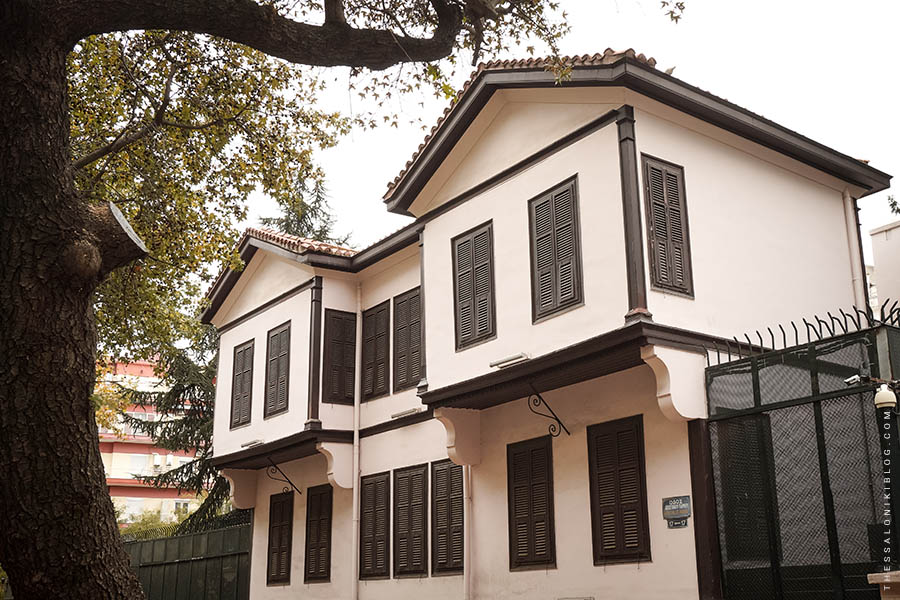
Besides the White Tower and the minaret at the Rotunda, the Ottoman monuments of Thessaloniki that are open to the public are the following:
- Alysseos Tower (part of the eastern wall in the Upper Town and a great vantage point over the city – it was from this spot that the city fell to the Ottomans in 1430, and it was for this reason that the tower was built),
- Yeni Hamam (now housing the bar-restaurant Aigli),
- Yeni Tzami and Alaca Imaret Mosque (both of them are now art exhibition spaces operated by the Municipal Art Gallery of Thessaloniki),
- Bey Hamam (the first and the largest Ottoman bath in the city, located at the junction of Aristotelous and Egnatias Streets),
- Yedi Kule (or “Heptapyrgion”, a Byzantine fortress with some Ottoman additions),
- Bezesteni market, and
- Mustafa Kemal Atatürk Museum.
You can find their addresses, their opening hours, and more info here.
11) TAKE A BOAT TRIP FROM THE WHITE TOWER
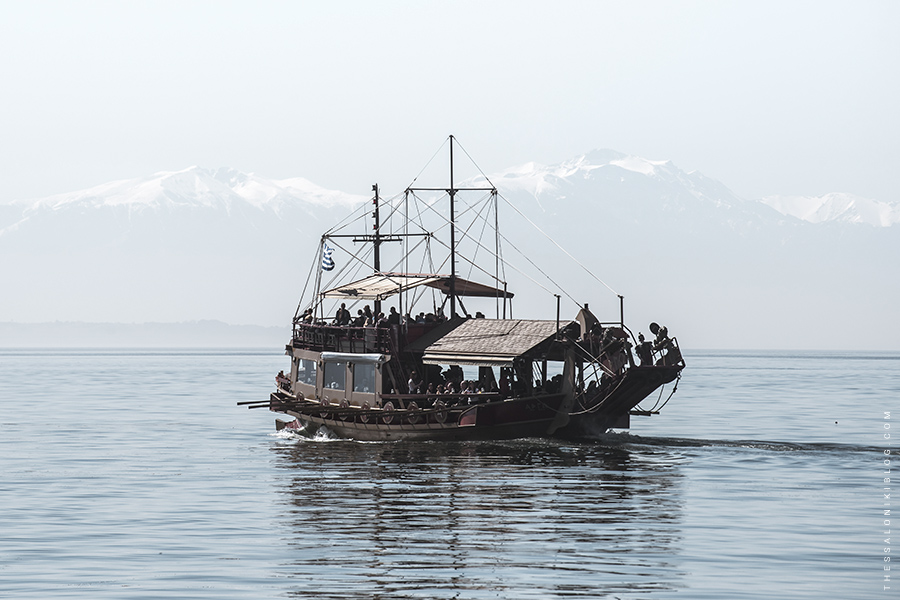
Probably, the most touristy thing to do in Thessaloniki these days is to go for a boat trip around Thermaikos gulf. However, regardless the exaggerations in the decoration of most of the boats and the costumes of the crew that welcomes you, a boat trip around Thermaikos gulf is a great experience. Especially on a clear and sunny day you get to enjoy the sea and the views of the city, the port, and Mt Olympus while having a cup of coffee or a drink.
The best time to get on board is during the sunset. All boats are located in front of the White Tower and the cost for the mini-cruise is usually included in your drinks. All rides last about half an hour, however, you can stay longer on the boat, before or after the trip. During the cold and windy days of Winter the boats are not available.
12) VISIT THE OTE TOWER FOR A 360° PANORAMA
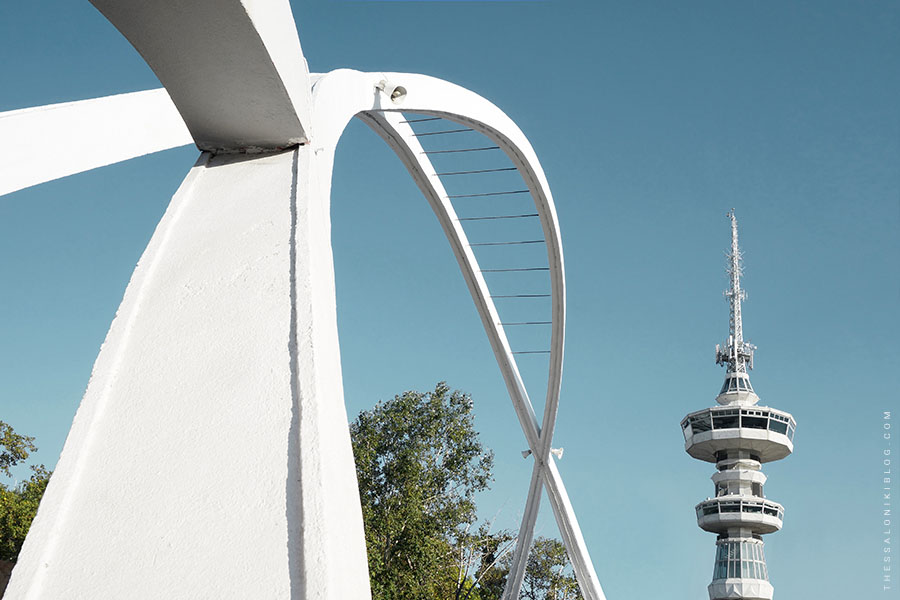
The OTE Tower is a telecommunications tower located inside the facilities of Thessaloniki’s “International Exhibition & Congress Center” that was constructed during the ’60s. Due to its futuristic design, it has become a modern landmark for the city and the symbol of Thessaloniki’s International Fair. The tower is 76 meters tall and has a rotating top floor that is currently housing the Skyline Bar offering wonderful 360° panorama views over the city. It can be accessed by an elevator and its rotating floor completes a full circle in 60 minutes. An interesting fact about the tower is that it was used for the first colour television broadcast in Greece.
ADDITIONAL SUGGESTIONS: ANNUAL EVENTS AND MORE SEASONAL THINGS YOU CAN DO
Depending on the time of the year that you will be travelling to Thessaloniki, you can add to your schedule many festivals, exhibitions, concerts, celebrations, and other types of cultural and commercial annual events. Autumn is the busiest period, during which the most important festivals of the city are taking place (“Thessaloniki International Fair” and “Thessaloniki International Film Festival”), while Winter is the less active. You can see a list with the most important annual events of the city here.
Between May and September, you can also take a waterbus from the White Tower or the port towards the nearest beaches of Thessaloniki, such as Peraia and Neoi Epivates (although not quite popular like the ones in Chalkidiki, they are much closer and the only ones that can be accessed directly by boat) or watch a movie in the wonderful outdoor cinemas of the city. If, on the other hand, you are visiting Thessaloniki during Christmas time, you can find more things that you can do here.

